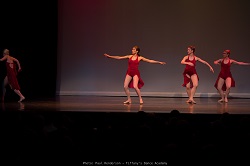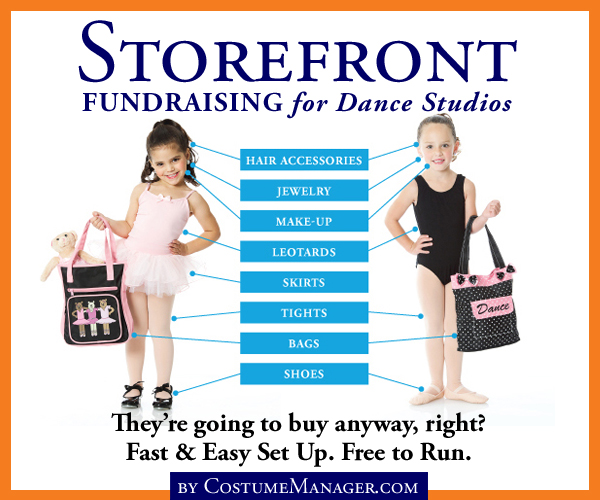Whatever can go wrong, will go wrong. Just don’t let it ruin your business.
By Paul Henderson.
A hush came over the audience seated in the quaint 600-seat theater near Union Square in San Francisco. The lights dimmed and the house music faded. Behind the curtain in the wings, Tiffany Henderson, her highly skilled faculty and members of Arizona-based dance company, Con Danza anxiously listened for their cue to begin the performance.
Tiffany Henderson, the founder of Bay Area Dance Company as well as the owner of Twinkle Star Dance™ and eight Tiffany’s Dance Academy locations had prepared for months to make this performance to benefit The Lone Survivor Foundation a reality.
I, with my trusty Nikon D4 on a tripod, stood in the audience behind the back row (as usual) and prepared to shoot the action photos of the event. The curtain opened, the audience erupted in applause, lights go, sound go. The dancers, including Tiffany, spilled beautifully onto the stage from the wings. 30 seconds later. POP! Tiffany, puzzled, looked around her at the floor, thinking that something had either fallen off of her costume or from overhead. She didn’t see anything, but soon realized as she tried to jump that her right leg was no longer functioning properly. The “pop” was her plantaris muscle (calf) tearing.
“There wasn’t a lot of pain when it happened,” she said afterwards, but “I couldn’t do anything. My leg just flopped there” as she hopped desperately toward the wings. Cesar, who was also in the piece, made his way to Tiffany who lay crumpled and crying on the floor in the wings. The music played on. The dancers on stage continued. He carried her backstage and hastily set her in a chair and continued his performance.
After the piece was over, I ran from my camera to the backstage area and tried to find Tiffany, who is also my wife of 15 years. I had already surmised, based on what I saw through the viewfinder of my camera that she had torn something in her leg. When I saw Cesar massaging her calf, I knew she was done for the night…and maybe for a while. The performance and all the work to make this night a possibility was over for her (as a performer) in the first thirty seconds of the first piece.
But it wasn’t over. A mixture of 100 professional dancers, Tiffany’s Dance Academy faculty and even a few of the school’s performing company dancers still had 20 numbers to perform. Backstage was chaos. Administrators, lighting techs, sound techs, stagehands, dressing room attendants and dancers crammed themselves into the tiny area where Tiffany sat in a chair; her leg propped up on a stool.

Tiffany sadly limps off stage to the shock of the other dancers and audience at Dance for a Difference 2014.
Tiffany watched her show from the wings with an aching lower leg. Amazingly, she wasn’t overwhelmed at the thought of how to now run her eight Tiffany’s Dance Academy locations while on crutches, even though she still had 15 numbers to choreograph for her competitive dancers.
Ask yourself this. What would you do if you suddenly couldn’t walk and couldn’t teach your classes?
Here’s why the inability for Tiffany to walk for a month has not affected the “business” of Tiffany’s Dance Academy and how, if you own a studio, you can prepare yourself for the inevitable “surprises” that occur.
Faculty – For over 14 years Tiffany has focused on building a team of dance educators who are passionate about their art and their work. This has not been easy and it’s only been the last four years or so that the team has melded into a real faculty. The faculty absorbed Tiffany’s classes. What makes them a team? Most of them are full time. They have health and dental insurance through the company. They don’t need to work another job to pay their bills. They have a 401k-retirement plan. They respect Tiffany and her goals and they work hard to make it happen. They love their dancers. It’s important to note that Tiffany has a vision of the correct way to run her studio and teach dance. She hires people who agree with her vision so she doesn’t have to battle someone else’s vision. She always tells dance studio owners and instructors the following. “Figure out who you are, what and how you want to teach and don’t waiver from that course. Don’t let parents of dancers and less experienced faculty tell you how to run your studio.”
Diversity of revenue – Most studio owners find it uncomfortable, even uncouth to talk about revenue sources and profit. Without a diverse and predictable revenue stream, disasters like a torn plantaris muscle will spiral into business failure. Remember, Tiffany had to give away 15 classes in January. Not to mention that the choreography was not completed for each of them. This means that not only will Tiffany not be teaching those classes for a few months; she will need to pay somebody to teach them and also pay them for choreography. Had she not built up a reserve of cash, this would have been impossible.
So, how did she do it? What are her other sources of revenue besides tuition?
They are the following and they make up over 38% of her studio’s total revenue.
• Recital costume profits
• Dress Code dancewear, shoe and accessory profits*
• Recital DVD sales
• Recital and Event Action Photo sales
• Recital concession sales
• Logowear
• Solos, Duos, Trios – one could argue that this is tuition, but if it’s done correctly it can dramatically increase revenue and instructor loyalty and happiness
• Tiered ticket pricing at recitals – $12, $19 and $25 reserved seating. (The $25 seats always sell out first.)
Tiffany’s expertise is in the classroom teaching dancers (and her teachers). Everything that is not “classroom” related distracts her from her core area of expertise. She has made it a point to outsource as much of the non-teaching tasks as possible.
*Tiffany doesn’t know how (nor does she have the desire) to operate a retail boutique. She does; however, need the revenue from her customer’s costume and dancewear purchases to help smooth out her cash flow. She outsourced recital costuming and dress codes sales to Storefront Fundraising by CostumeManager.com. The system has given her, on average, $100 net profit per dancer per season, while eliminating most of the work associated with these tasks.
Since she is not an expert at selling tickets to events, she outsourced ticketing to an online service (Etix) that sells reserved or general seating tickets to patrons online.
Other areas to consider outsourcing:
• bookkeeping
• human resources department
• janitorial company
• handyman on retainer to keep the studios in tip-top shape
• music editing
• videographer who shoots all of her events
• Photography – action and class photos
• marketing to handle graphic art, social media, Constant Contact emails, etc.
By offloading everything that is not her core area of expertise she freed herself to focus on what she is really good at – teaching dance and teaching teachers.
Update: it’s been 6 weeks since the injury and Tiffany was finally able to put on a tennis shoe last week. Physical therapy is going well and she hopes to be fully recovered by September.
Photo (top): © Uros Zunic | Dreamstime.com














